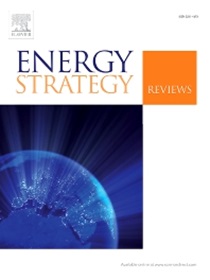脉石山光伏电站选址策略:基于GIS和AHP-TOPSIS的综合方法
IF 7.9
2区 工程技术
Q1 ENERGY & FUELS
引用次数: 0
摘要
中国广泛的采矿历史导致了大量废弃矿山和煤矸石山的形成,这对环境和社会构成了重大挑战。这些遗址助长了生态退化、环境污染和社会经济问题,如失业和城市衰落。处理这些采矿荒地的管理和改造问题对可持续发展至关重要。本研究探讨了在脉石山上建立光伏发电厂作为环境修复和经济振兴手段的潜力。结合地理信息系统(GIS)和TOPSIS (Order Preference By Similarity to a Ideal Solution)技术,建立了煤矸石山光伏建设用地的选址模型。该模型考虑了多种因素,包括经济、交通、地理、环境和社会影响,以确保最佳选址和可持续发展。本研究以煤炭大矿区山西省阳泉市为研究对象,确定了14座适合光伏建设的矸石山。研究结果表明,矸石山光伏项目可实现生态修复和经济效益的双重效益。研究针对不同类型的矸石山,提出了科普娱乐建设、资源复垦建设、生态修复建设三种发展策略。本研究为矿业废弃地的可持续利用提供了一个全面的框架,为可再生能源部门的决策者和利益相关者提供了有价值的见解。本文章由计算机程序翻译,如有差异,请以英文原文为准。
Site selection strategy for photovoltaic power plants construction on gangue hills: An integrated method based on GIS and AHP-TOPSIS
China's extensive mining history has led to the formation of numerous abandoned mines and coal gangue hills, which pose significant environmental and social challenges. These sites contribute to ecological degradation, environmental pollution, and socio-economic issues such as unemployment and urban decline. Addressing the management and transformation of these mining wastelands is crucial for sustainable development. This study explores the potential of establishing photovoltaic (PV) power plants on gangue hills as a means of environmental rehabilitation and economic revitalization. By integrating Geographic Information Systems (GIS) and the Technique for Order Preference by Similarity to an Ideal Solution (TOPSIS), the research develops a site selection model to evaluate suitable areas for PV construction on gangue hills. The model considers multiple factors, including economic, transportation, geographical, environmental, and social impacts, to ensure optimal site selection and sustainable development. The study focuses on Yangquan City, Shanxi Province, a major coal mining region, and identifies 14 gangue hills suitable for PV construction. The results demonstrate that PV projects on gangue hills can achieve dual benefits of ecological restoration and economic efficiency. The research proposes three development strategies: science popularization and entertainment construction, resource reclamation construction, and ecological restoration construction, tailored to different types of gangue hills. This study provides a comprehensive framework for the sustainable utilization of mining wastelands, offering valuable insights for policymakers and stakeholders in the renewable energy sector.
求助全文
通过发布文献求助,成功后即可免费获取论文全文。
去求助
来源期刊

Energy Strategy Reviews
Energy-Energy (miscellaneous)
CiteScore
12.80
自引率
4.90%
发文量
167
审稿时长
40 weeks
期刊介绍:
Energy Strategy Reviews is a gold open access journal that provides authoritative content on strategic decision-making and vision-sharing related to society''s energy needs.
Energy Strategy Reviews publishes:
• Analyses
• Methodologies
• Case Studies
• Reviews
And by invitation:
• Report Reviews
• Viewpoints
 求助内容:
求助内容: 应助结果提醒方式:
应助结果提醒方式:


